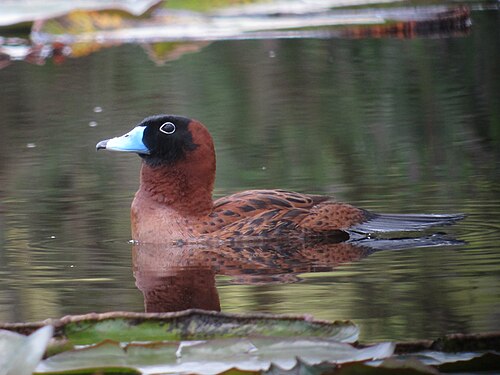| Masked duck | |
|---|---|
 | |
| Adult males, Tobago | |
| Scientific classification | |
| Domain: | Eukaryota |
| Kingdom: | Animalia |
| Phylum: | Chordata |
| Class: | Aves |
| Order: | Anseriformes |
| Family: | Anatidae |
| Genus: | Nomonyx Ridgway, 1880 |
| Species: | N. dominicus |
| Binomial name | |
| Nomonyx dominicus (Linnaeus, 1766) | |
 | |
| Synonyms | |
| |
The masked duck (Nomonyx dominicus) is a tiny stiff-tailed duck ranging through the tropical Americas.





